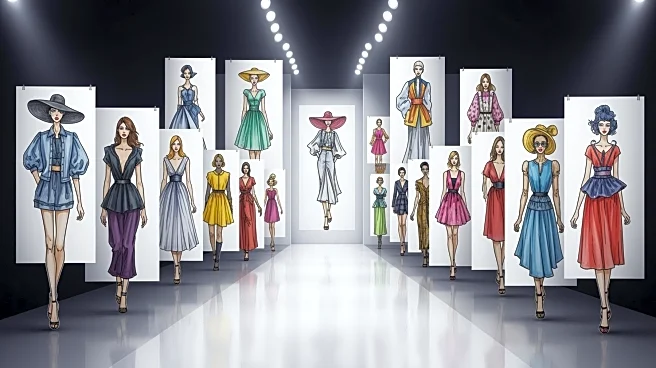What's Happening?
Fashion seasons represent specific timeframes within the year when fashion houses present new collections. The industry operates on a bi-annual cycle with two main seasons: Spring/Summer and Autumn/Winter,
along with micro-seasons like Pre-Fall and Resort/Cruise. These cycles influence design, manufacturing, and retail operations, serving as a framework for creative expression and market economics. The system shapes designers' collections, market responses, and consumer wearing habits, evolving from climate-based needs to a global event schedule.
Why It's Important?
The fashion season system is a critical economic lever within the global fashion ecosystem, impacting sustainable fashion practices and slow fashion movements. It dictates market demand, production timelines, and consumer spending, influencing the industry's dynamics. Understanding this system is essential for stakeholders to navigate the fashion landscape effectively, ensuring alignment with industry trends and consumer preferences. As the system evolves, it may lead to more sustainable and adaptable fashion practices, benefiting both the industry and consumers.











